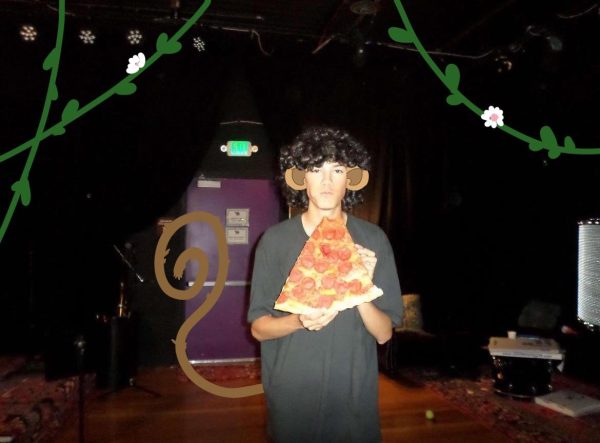This article covers sensitive topics that may be disturbing to some readers. Reader discretion is advised.
Theodore (Ted) Robert Cowell – born on Nov 24, 1946 – was a serial rapist and murderer. His mother, Louise Cowell, grew up in a very religious household, and when she became an unwed mother. She was looked down on by her community and family.
When Cowell was born, he grew up with his grandparents under the belief that they were his parents and that his mother was his older sister. This facade was created to protect his mother from prejudice within the family.
However, when Cowell turned four, he and his mother moved to Tacoma, Washington to live with relatives, which is when he learned that his “older sister” was truthfully his mother. Shortly after, Louise met Johnnie Culpepper Bundy, who soon became her husband.
Ted would adopt his last name and keep it for the rest of his life.
As a child, Bundy was already showing violent tendencies: digging holes in the ground and putting a stake in them with hopes someone would fall in. At least one girl had fallen in his “tiger trap” and injured her leg. He’d done this many times on Boy Scout retreats, and reportedly hit a fellow Boy Scout over the head with a stick.
It was also revealed that Bundy had also been violent with animals – pulling mice apart in woods near his home. In a 2016 interview with Bundy’s attorney John Henry Browne, Browne explained that Bundy would buy mice at the local pet store and “play God” with them to determine their fate: life or death.
Johnnie would often try and connect with Ted by taking him on camping trips and other father-son activities, but it was said that overall, Ted preferred to be alone. He was very shy, and uncomfortable in social situations.
While Ted was incredibly smart and maintained a high-grade point average, he was frequently bullied and teased at school for being “different”.
As Ted entered high school, his popularity soared. Many referred to him as “well dressed and exceptionally well mannered”. Even though he’d become popular, he remained to himself; refraining from dating. Instead, he became interested in politics and law.
Throughout his time in high school, Ted became a “peeping tom”, regularly peeping through women’s bedroom windows unbeknownst to them.
Bundy studied law at the University of Washington and earned a degree in psychology in 1972.
Bundy began dating a woman during his time at the University of Washington. She was the “woman of his dreams”. He fell in love with her due to her beauty, class, respect from others, and the fact that she had everything he’d been missing.
She ultimately broke up with him as she thought he had no real direction in life and didn’t expect him to go anywhere.
It was said that the majority of his victims resembled her, with long, dark hair.
Bundy confessed to murdering 36 women over five years in the 1970s, but law enforcement believes it was closer to 100 victims. Most of these women were murdered in Utah, Colorado, and Idaho.
His murders followed a gruesome pattern of brutally assaulting and raping these women, followed by beating them to death. Bundy would pretend to be hurt, and through compassion, these women would be lured to his car, proving fatal. He would also go back to his burial sites and perform sexual acts with the decomposing bodies of his victims. It was said that he would “continue to do this until the bodies were so decomposed or damaged by wild animals that it was no longer possible to have physical contact with them.”
In 1969, Bundy began dating Elizabeth Kloepfer. Kloepfer was a single mother who struggled with alcoholism, and she began dating Bundy because he was “warm and loving” and took care of her. She would ultimately assist in getting him arrested and prosecuted.
Bundy’s first confessed murder was 21-year-old Lynda Ann Healy, who was widely known for giving the weekday ski report on the radio. He abducted her in February of 1974 from the University District of Seattle, which is where his college campus was located. He broke into her apartment, beat her unconscious, strangled her, dressed her, then fled the scene with her body.
After Lynda, Bundy would go on to murder 35 more women.
In August of 1975, Bundy was pulled over for failing to stop for a routine traffic stop. The Salt Lake City officer who pulled him over noticed he was missing his passenger seat and became suspicious. The officer then instructed Ted to exit his vehicle so he could search it.
As the officer was searching Bundy’s car, he found what he called a “murder kit” which included a mask made from pantyhose, a ski mask, handcuffs, rope, an ice pick, a crowbar, various tools, and trash bags.
Bundy explained that these were normal items he’d brought from his house.
Luckily, the officer recalled a description of a vehicle and suspect from a kidnapping in November of the previous year, which matched Ted Bundy perfectly. The officer brought him to the Salt Lake County jail.
The Salt Lake City police department searched Bundy’s apartment, but unfortunately didn’t find anything, so for lack of evidence, he was released on bail the following day; and put on a 24-hour surveillance.
During this 24-hour surveillance, the Salt Lake PD would contact Elizabeth Kloepfer, who had since ended things with Bundy.
She stated that during their relationship while they lived together, she had found crutches, surgical gloves, a sack of women’s clothing, and a meat cleaver both in her apartment and Bundy’s home at the time. He had also brought a new TV and radio to her apartment.
Because Bundy had always been in debt and been fairly poor, Kloepfer questioned where he’d gotten the new TV and radio from. When confronted about it, Bundy warned her that “if you tell anyone, I’ll break your fucking neck.”
Police would later do forensic testing on his vehicle, finding hairs of women – two of which had gone missing, and one who was still alive. They contacted this woman, and she explained that she had escaped Bundy’s attempted abduction, and was going to press charges.
Bundy was put in a lineup, which is “a relatively formalized procedure wherein a suspect, who is generally already in custody, is placed among a group of other persons whose general appearance resembles the suspect”. The woman who escaped was asked to point out her attacker and was able to immediately identify Bundy.
Despite being charged with aggravated kidnapping and attempted criminal assault, Bundy was let out of jail on bail.
Bundy was brought back in Feb of 1976 for the case of the woman who escaped and was proven guilty of aggravated kidnapping and criminal assault in June of 1976. He was sentenced to up to 15 years in prison.
However, Bundy wouldn’t last long in prison, as he escaped in October of 1976. He was found not long after hiding in bushes on the prison grounds, and sent to solitary confinement – where he spent multiple weeks.
During his time in prison after being discovered, Bundy was charged with the murder of a woman in Aspen, Colorado.
He chose to represent himself in court, meaning he remained uncuffed during the length of his trial.
Bundy was permitted to visit the library in the courthouse to conduct research for his case and was able to escape yet again through an open window. He jumped from the second story of the building.
Bundy was captured after eight days.
In January of 1978, Bundy escaped custody again through a hole he had created in the ceiling of his cell, losing 30 pounds to fit through it. Bundy stacked books on his bed to make it look like he was sleeping there, but he’d escaped hours previously. He was missing for 15 hours.
In those 15 hours, Bundy made his way to the Florida State sorority house and committed one of his most gruesome murders.
At around 2:45 AM, he attacked a 21-year-old woman with a piece of firewood while she was sleeping. Following that, he used a nylon stocking to strangle her.
After her, he moved towards the neighboring room, home to another sleeping 20-year-old’s room. He beat her unconscious, then strangled her. Bundy tore off one of her nipples, sexually assaulted her with a bottle, and then bit her buttock, which would later prove Bundy’s connection to these murders.
Bundy then went to the next room and attacked two sleeping women. One of the women had her jaw broken, and her shoulder was nearly detached. The other woman suffered a concussion, a broken jaw, a broken finger, and missing teeth.
These four women were attacked within 15 minutes of Bundy being there.
Bundy then stole a vehicle in hopes of escaping, but he was pulled over yet again. The officer ran the plates and found that the vehicle was reported stolen. When the officer informed Bundy that he was under arrest, Bundy assaulted the officer and fled.
The officer fired two warning shots and began chasing Bundy on foot. The officer was able to tackle Bundy and put him under arrest.
Once Bundy was secured, they searched the stolen vehicle finding three IDs belonging to the women at the sorority house, as well as 21 stolen credit cards, and a stolen television set.
Bundy was taken to jail and would stay there until his trial.
In June of 1979, Bundy stood trial for the homicides at the Florida State sorority house. This trial was covered by 250 reporters from five continents and was the first trial to be televised nationally in the US.
Forensic experts were able to identify the bite mark left on the Florida woman’s buttock by comparison to Bundy’s teeth – which was the major connecting evidence in this case. Bundy was convicted, and sentenced to death by electrocution.
Ted Bundy was executed on Jan 24, 1989, at 42 years old in the Florida State Prison.






